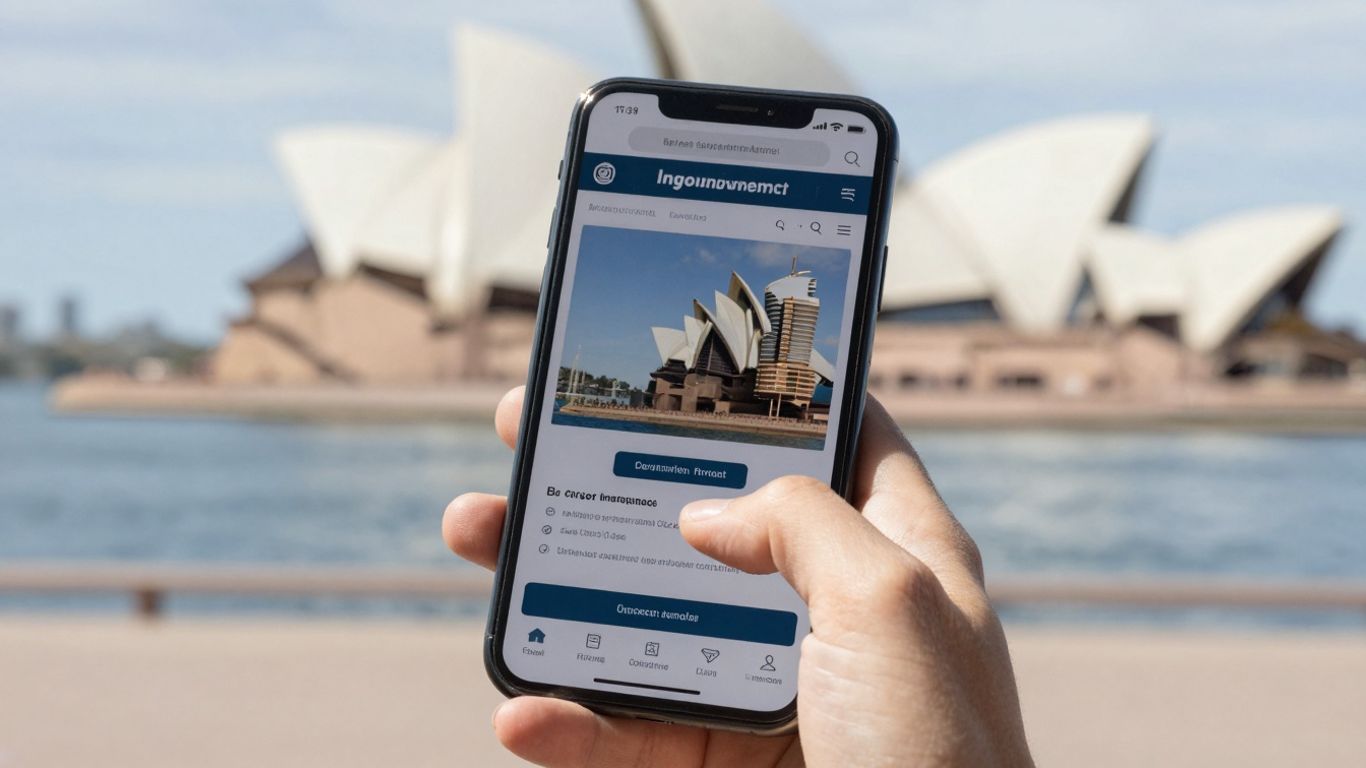Alright, let’s talk about the Medicare levy low-income threshold 2024. It’s one of those things that pops up on your tax return, and you might wonder what it’s all about. Basically, it’s a small percentage of your income that helps pay for our public healthcare system, Medicare. But here’s the good news: not everyone has to pay it, and there are specific income levels where you might pay less or nothing at all. We’ll break down who pays what and how it all works for this year.
Key Takeaways
- The Medicare levy is a 2% tax on your income to fund Australia’s public healthcare.
- If your taxable income is below certain thresholds, you might pay less or no Medicare levy.
- For 2024, singles earning under $27,222 generally don’t pay the levy, with a phased increase up to $34,027.
- Family thresholds are higher, and these figures change each year, so always check the latest figures.
- You might be exempt if you’re a temporary resident not eligible for Medicare, or have specific medical conditions, but you’ll need a Medicare Entitlement Statement.
Understanding the Medicare Levy Threshold 2024
So, what exactly is this Medicare Levy thing? Basically, it’s a small percentage of your income that helps pay for our public healthcare system, Medicare. Think of it as chipping in for all those doctor visits, hospital stays, and other health services that most Australians can access without a direct bill. It’s not a separate payment; it’s usually just added onto your income tax. For the 2024-25 financial year, the standard rate is 2% of your taxable income.
What is the Medicare Levy?
The Medicare Levy is a contribution towards Australia’s universal healthcare system. It’s collected as part of your income tax and helps fund services like public hospitals, doctors’ visits, and subsidised medicines. Most Australian residents have to pay it, though there are some exceptions.
Who Pays the Medicare Levy?
Generally, if you’re an Australian resident for tax purposes, you’ll pay the Medicare Levy. However, there are specific income thresholds. If your taxable income is below a certain amount, you might not have to pay it, or you might pay a reduced amount. For instance, if you’re single and your taxable income for 2024-25 is less than $27,222, you generally won’t pay the levy. This threshold is adjusted each year, so it’s always good to check the latest figures.
The Purpose of the Medicare Levy
The main reason for the Medicare Levy is to fund Medicare, our national healthcare scheme. It ensures that all Australians have access to affordable healthcare, regardless of their income. It’s a way to share the cost of healthcare across the population, making sure the system remains sustainable and accessible for everyone. It’s different from the Medicare Levy Surcharge, which encourages people with higher incomes to take out private health insurance.
It’s important to remember that the Medicare Levy is separate from the Medicare Levy Surcharge (MLS). The MLS is an additional charge for higher-income earners who don’t have appropriate private health insurance, aimed at encouraging more people to use private cover and reduce the strain on public hospitals. The levy itself is just about funding the public system.
Understanding these basics is the first step to figuring out how it affects your tax return. Knowing your income and whether you fall above or below the thresholds is key. For more detailed information on specific thresholds, you can check out the Australian Taxation Office website.
Key Income Thresholds for 2024

Knowing where you stand with the Medicare levy is pretty important, especially when tax time rolls around. It’s all about your income and who you’re supporting. The Australian Tax Office (ATO) sets out specific income levels, and if you fall below them, you might not have to pay the full levy, or even any at all. It’s not just about being single or in a couple; they also consider things like having kids or if you’re a senior. Let’s break down these income figures for 2024.
Thresholds for Singles
If you’re flying solo, the income thresholds are set based on your individual taxable income. For the 2024 income year, if your taxable income is $27,222 or less, you generally won’t have to pay the Medicare levy. If your income is between $27,223 and $34,027, you might get a reduced levy. It’s a bit of a sliding scale, so the closer you are to the lower end, the less you’ll pay.
Thresholds for Families and Couples
Things change a bit when you’re part of a family unit. For couples or families, the threshold is higher. If your combined family taxable income is $45,907 or less, you generally don’t pay the levy. For families where the income is between $45,908 and $57,383, a reduced levy might apply. Remember, this threshold goes up by $4,216 for each dependent child you have. So, if you’ve got a few little ones, your family threshold will be higher.
Thresholds for Seniors and Pensioners
There are special considerations for seniors and pensioners. If you’re eligible for the seniors and pensioners tax offset, the thresholds are a bit more generous. For singles, the no-levy threshold is $43,020, and the reduced levy applies between $43,021 and $53,775. For couples or families, the no-levy threshold is $59,886, and the reduced levy applies between $59,887 and $74,857. These higher thresholds are there to help ease the tax burden for those on fixed incomes.
It’s always a good idea to check your exact taxable income figure, as this is what the ATO uses to determine your Medicare levy obligations. Small differences can mean you fall into a different bracket.
It’s worth noting that these figures are for the 2024 income year. If you’re a temporary resident and not eligible for Medicare benefits, you might be exempt from the levy altogether. You can find more details on avoiding the Medicare Levy Surcharge if you have private health insurance, which is a separate but related topic.
Navigating Reduced Levy Rates
So, your income is a bit higher than the basic threshold, but maybe not quite high enough to cop the full 2% Medicare Levy? That’s where the reduced levy rates come in. It’s basically a way for the government to ease you into paying the full amount as your income creeps up. Think of it as a gradual contribution to our healthcare system.
Reduced Levy for Singles
If you’re flying solo income-wise, the reduced levy kicks in once you earn above the low-income threshold. For singles, this means if your taxable income is between $27,222 and $34,027, you’ll pay a portion of the levy. It starts small, at 10 cents for every dollar you earn over $27,222, and then gradually increases until you hit the $34,027 mark, where you’ll be paying the full 2%.
Reduced Levy for Families
Families have a slightly different set of figures. If your combined family taxable income is between $45,907 and $57,383, you’ll also be looking at a reduced levy. This threshold gets a bit higher for each child you have, which makes sense. Similar to singles, the levy starts at a lower percentage and ramps up as your family income increases.
When Does the Full Levy Apply?
Basically, once you’re earning above the higher thresholds – $34,027 for singles and $57,383 for families (plus those extra amounts for kids) – you’ll be liable for the full 2% Medicare Levy. It’s important to know these figures so you can plan your finances accordingly and avoid any surprises when you do your tax return. Understanding these thresholds can help you manage your finances and potentially save money, so it’s worth looking into ways of managing your finances.
It’s not just about paying the levy; it’s about understanding how your income affects it. This way, you can make informed decisions about your tax situation throughout the year.
Eligibility for Medicare Levy Exemptions

Low-Income Earner Exemptions
So, you might be off the hook for the Medicare levy if your income is pretty low. For the 2024 tax year, if you’re single and your taxable income is $27,222 or less, you generally don’t have to pay it. For couples or families, this threshold is $45,907. If you’re a senior or pensioner, these figures are a bit higher, with the exemption applying up to $43,020 for singles and $59,886 for families. It’s not just a straight exemption though; if your income is a bit above these numbers but still not super high, you might get a reduced rate instead. This applies to singles earning between $27,222 and $34,027, and families between $45,907 and $57,383. Remember, these thresholds can change each year, so always check the latest figures.
Exemptions for Temporary Residents
If you’re not an Australian citizen or permanent resident, or if you’re a permanent resident who’s been living overseas for a while, you might not be eligible for Medicare. This means you could be exempt from paying the levy. Generally, if you’re on a temporary visa and haven’t applied for permanent residency, or if you’re a foreign resident, you’re likely exempt. There are also specific rules for New Zealand citizens who haven’t lived here for a full 12 months, and even Australian citizens who’ve been living abroad for five years or more might qualify. The key thing here is your eligibility for Medicare services. If you’re not entitled to them, you probably don’t need to pay the levy.
Exemptions Based on Medical Conditions
Sometimes, your health situation can also mean you’re exempt from the Medicare levy. This can include having specific medical conditions or holding certain cards. For instance, if you have a Veterans’ Affairs Repatriation Health Card, or if you’re receiving a sickness allowance from Centrelink, you might be exempt. Similarly, if you have impaired vision and are a pensioner, that could also qualify you for an exemption. It’s worth checking if any of these apply to you, as it could save you some money on your tax return. You might be eligible for a full or half Medicare levy exemption if you meet specific criteria. This exemption is available to individuals who satisfy certain conditions related to their medical circumstances [4a1d].
It’s really important to get this right. If you think you qualify for an exemption, you usually need to get a Medicare Entitlement Statement from Services Australia. This can take a while to process, sometimes up to eight weeks, so don’t leave it until the last minute before your tax return is due.
Claiming Your Medicare Levy Exemption
So, you reckon you might not have to pay the Medicare levy? That’s fair enough, especially if your circumstances changed during the year or you weren’t eligible for Medicare for a bit. The Australian Taxation Office (ATO) gets that, and they’ve got a process for it. The key to getting an exemption is usually a Medicare Entitlement Statement (MES).
Obtaining a Medicare Entitlement Statement
This statement is basically your official ticket to an exemption. You get it from Services Australia. It confirms whether you were eligible for Medicare for the whole year, part of the year, or not at all. It’s a good idea to apply for this well before tax time, because it can take a while to process – we’re talking up to eight weeks sometimes. You can usually apply online through the Services Australia website.
Applying for Exemptions for Previous Years
What if you’ve already done your tax return and paid the levy, but now you realise you should have been exempt? Don’t stress too much. If you’ve lodged your return within the last two years, you can lodge an amendment. You’ll need that MES to sort it out with the ATO, and they can sort out a refund for any levy you paid incorrectly. It’s always worth checking if you’ve overpaid.
Lodging Your Tax Return Correctly
Once you have your MES, you need to make sure you fill out the right section on your tax return. There’s a specific spot for Medicare levy exemptions. If you’re using a tax agent, they’ll know exactly what to do. If you’re doing it yourself, just follow the instructions carefully. It’s important to get this right so you don’t end up paying the levy when you don’t have to. For families needing help with subsidies, understanding these tax implications is just one part of managing household finances, similar to how families look into the Child Care Subsidy.
It’s really about making sure your tax return accurately reflects your situation for the entire financial year. If you were only eligible for Medicare for, say, six months, you’ll only pay the levy for those six months, and the MES helps prove that.
Here’s a quick rundown of who might need an MES:
- People who were not eligible for Medicare for the entire financial year.
- Temporary residents who weren’t eligible for Medicare.
- Australian citizens who lived overseas for five years or more and weren’t eligible.
- People who hold a specific type of Veterans’ Affairs Repatriation Health Card.
Remember, if you’re unsure about your eligibility or the process, it’s always best to chat with Services Australia or a tax professional. They can help you sort out exactly what you need to do to claim your exemption correctly.
Strategies to Manage Your Medicare Levy
So, you’ve figured out where you stand with the Medicare levy thresholds, but what if you’re still a bit over the line, or just want to be extra savvy with your tax? Don’t sweat it, there are definitely ways to manage this. It’s not about dodging anything, just being smart with your finances.
Maximising Tax Deductions
This is probably the most common way people try to lower their taxable income. Think about all those expenses you had during the year that were directly related to earning your income. Things like work-related travel, uniforms, or even professional development courses could be deductible. It’s worth keeping good records throughout the year – a shoebox full of receipts isn’t ideal, but it’s better than nothing! If you’re self-employed, the list of potential deductions gets even longer, covering things like office supplies, phone bills, and even a portion of your home running costs if you work from home. Just remember, the ATO is pretty strict on what counts, so make sure your expenses are legitimate and directly linked to earning your income.
Income Splitting Opportunities
If you’re married or in a de facto relationship, this could be a game-changer. The idea is to shift some of your income to your partner if they’re on a lower tax rate. This can be done through various means, like directing salary or wages, or through investments. For example, if you own investments that generate dividends, you might be able to structure them so that your partner receives a larger share. This can effectively lower your combined taxable income, potentially bringing you both under the Medicare levy threshold, or at least reducing the overall levy payable. It’s a bit more complex and might involve seeking advice, especially if you have significant assets, but it can be quite effective. It’s also worth noting that changes to family tax laws can affect how this works, so staying up-to-date is key. For families with more children, the income thresholds for things like the private health insurance rebate also increase, which is a related benefit to consider for families with more children.
Timing Income and Deductions
This strategy is all about playing the calendar. If you know you’re going to be just over the threshold in one financial year, but could be under it in another, timing can help. For instance, if you’re expecting a bonus or a large payment, see if it can be deferred to the next financial year. Conversely, if you have a large deductible expense coming up, like a significant work-related purchase, try to incur it before June 30th. This way, you pull that deduction into the current financial year, lowering your taxable income for that period. It requires a bit of foresight and understanding of when your income and expenses are likely to fall, but it can make a difference in your Medicare levy liability.
Being proactive with your tax planning, especially around the Medicare levy, can save you money and stress. It’s about understanding the rules and using them to your advantage.
Wrapping Up: Your Medicare Levy Low-Income Threshold Guide
So, that’s the lowdown on the Medicare levy threshold for 2024. It’s not the most exciting topic, I know, but understanding where you stand can save you a bit of hassle and maybe even some cash. Remember, if your income is below the threshold, you might not have to pay the levy, or you could get a reduced rate. And if you’re unsure about your specific situation, especially with all the different family and senior rates, it’s always a good idea to have a chat with a tax professional or check out the ATO website. Getting it right means you’re doing your bit for our healthcare system and staying on the right side of the taxman.
Frequently Asked Questions
What exactly is the Medicare Levy?
The Medicare Levy is a small extra tax, usually 2% of your income, that helps pay for our public health system, Medicare. It means things like hospital stays and doctor visits can be free or cheaper for everyone. Most Aussies pay it automatically from their pay.
Do I have to pay the Medicare Levy if I don’t earn much?
Basically, if your income is pretty low, you might not have to pay it. For 2024, if you’re single and earn less than about $27,222, you usually don’t pay. If you’re in a couple or family, the threshold is higher. There are also special rules for seniors and pensioners.
Does private health insurance mean I don’t pay the Medicare Levy?
Yes, you generally do. Having private health insurance doesn’t mean you can skip the Medicare Levy. It does, however, affect whether you have to pay the Medicare Levy Surcharge, which is a different thing for people on higher incomes who don’t have private hospital cover.
When might I be exempt from paying the Medicare Levy?
You might be able to get an exemption if you’re not eligible for Medicare benefits. This often happens if you’re a temporary resident on certain visas, or if you’ve lived overseas for a long time. You’ll usually need a ‘Medicare Entitlement Statement’ from Services Australia to prove you’re exempt.
What if my income is just above the low-income limit?
If your income is a bit higher, you might pay a reduced amount instead of the full levy. It’s like a sliding scale – the more you earn above the low-income threshold, the more you pay, but it gradually increases until you reach the full 2%.
Are there ways to lower the amount of Medicare Levy I pay?
You can try to lower your taxable income. This could mean claiming all the work-related expenses you’re allowed, or maybe making extra contributions to your super fund. Sometimes, if you’re in a relationship, you can also split your income with your partner to keep both your incomes lower.





